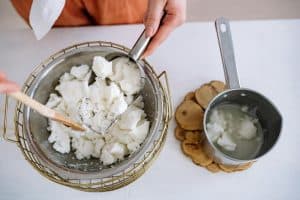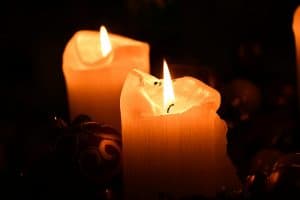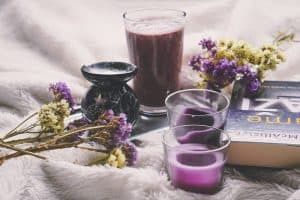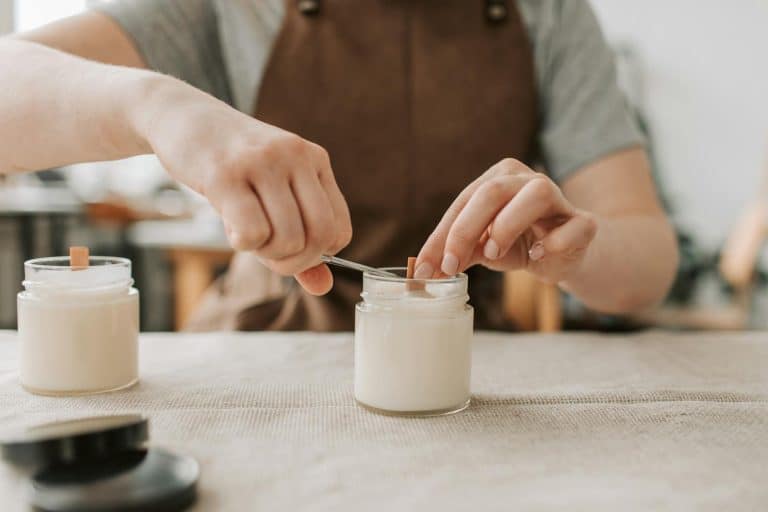Ever since I ventured into creating a meditation space at home, I’ve discovered the transformative power of handcrafted candles. It’s not just about having decorative items; it’s about creating an entire experience that amplifies the calm ambiance of my sanctuary. That’s what led me to explore the realm of candle-making at home, and let me tell you, it’s been quite an enlightening journey.
I quickly learned that making candles is an art, one that requires patience and a bit of know-how. But don’t worry, I’ve made all the mistakes already, and I’m here to guide you through a foolproof process. Whether you’re looking to add a personal touch to your meditation space or crafting gifts for friends, I’ve got you covered.
In just 20 minutes, you can create natural, beautiful candles that bring a sense of peace and serenity to any space. Stick with me, and I’ll show you how to make candles that will elevate your meditation space at home to a whole new level.
Understanding the Basics of Candle Making

As I delve deeper into the craft of candle making at home, I’ve come to realize it’s both an art and a science. To start, it’s critical to understand the primary components that make up a candle: candle wax, wick, and container. The process may seem straightforward, but mastering it means paying attention to detail and respecting the craft.
Preparing Your Materials for DIY Candle Making
Before you begin your DIY candle making adventure, gathering the right supplies is key. You’ll need:
- Soy wax flakes: A popular choice for its clean burn and eco-friendly attributes, soy wax is a go-to for many of my homemade candles.
- A reliable double boiler: This is where you’ll melt the wax. If you don’t have one, a makeshift version using a pot and a heat-proof bowl can work in a pinch.
- Candle wick: The lifeline of your candle, the wick needs to be sized appropriately for the candle’s diameter.
- Candle container: Options range from glass jars to mason jars to any heat-proof container you fancy. Be creative but always prioritize safety.
- Scented oils: If you’re into scented candles, essential oils or fragrance oils are a must to create those homemade candle scents your heart desires.
Melting Wax: The Foundation of Candle Making
Melting wax requires a delicate touch. I place the soy wax flakes in the double boiler and let them gently transform into melted wax. To avoid overheating, I use a candy thermometer to monitor the temperature closely – the optimal melting point for soy wax typically ranges around 170-180 degrees Fahrenheit.
Crafting the Candle
Once the wax is melted, it’s time to add personality to my creation. Here’s where I infuse the wax with a chosen scent. I’ve found that when making scented candles, it’s important to know how much fragrance to add – usually, 1 ounce of oil per pound of wax strikes the right balance.
Choosing the Right Wax and Wicks

When I delve into candle making at home, I always emphasize the significance of selecting the proper materials. The type of candle wax and wick I choose dictates not only the candle’s burn time and consistency but also the overall success of homemade candles.
Understanding Candle Wax Options
In the vast world of candle making, there are multiple wax options to explore. Soy wax is a top choice for DIY candle making because of its clean-burning properties and environmental friendliness. Compared to paraffin, soy wax, often sold in soy wax flakes, is biodegradable and sourced from renewable resources. Here’s a quick rundown on choosing how much wax is needed for different candle containers:
- For small candle containers, such as votive glasses, you’ll need approximately 0.5 pounds of wax.
- Medium candle jars, like standard mason jars, may require between 0.5 to 1 pound.
- Larger containers, such as excellent candle containers designed for statement pieces, can demand up to 2 pounds or more.
The Impact of Choosing the Right Wick
The right wick goes hand in hand with the right wax. I’ve experienced firsthand that pairing soy wax with certain wicks like CD and LX can lead to a brilliant burn. Cotton wicks are a personal favorite when making scented candles due to their ability to burn cleanly and evenly, allowing the homemade candle scents to diffuse beautifully.
Incorporating Fragrance and Color
When adding scented oils to melted wax, I ensure the fragrance matches the ambiance I want the candle to evoke. For handcrafted candles, I typically use about 10% fragrance oil by weight to the wax. This means I’d add 1 ounce of fragrance oil to 10 ounces of wax. The key is to stir the fragrance oil into the wax mixture thoroughly to ensure an even scent distribution.
- Heat-proof containers
- A reliable double boiler for melting wax
- Candle wick centered at the bottom of the container
- Wick stickers
Selecting Fragrances and Dyes

Diving deeper into the art of candle making at home, fragrance and color add a visceral touch to our homemade candles. With every DIY candle project, the proper selection of scents can create an inviting atmosphere while hues set the mood, making both elements integral to the crafting process.
The Scent of Success in Candle Making
When I’m on the hunt for that perfect fragrance for my DIY candles, I’ve learned it’s vital to focus on high-quality fragrance oils. These oils are crafted with candles in mind, which means they’re designed to disseminate a thorough scent throw, essential for making scented candles that truly fill a room. Candle Science Clean Scents are a great go-to for fragrance oils as they’re phthalate-free, ensuring safety and quality.
In terms of how much fragrance to use, the formula I swear by is one ounce of fragrance oil per pound of melted wax. This balance generally guarantees a desirable aroma without overpowering the senses. I find this ratio ideal for soy wax, which, while not as potent as paraffin in scent retention, still delivers a gratifying whiff.
Coloring Your Handcrafted Candles
Shading your own candles is a fabulous way to personalize your home decor. Whether it’s serene blues for a calming vibe or energizing yellows, adding dye to melted wax takes your candle-making venture to another level. I always ensure to add the colorant to the wax at the correct temperature, as this affects the final outcome. Keep a close eye on the wax as it melts, using a candy thermometer to hit that sweet spot where the wax absorbs the dye evenly.
The process is straightforward: melt the soy wax flakes carefully in a double boiler, add in the dye, and stir until uniformly mixed. Then, you’re ready to pour the wax into your candle container of choice. Be it trendy mason jars or simple glass containers, a properly colored and scented candle immediately elevates any space.
I’ve found that while essential oils are a natural scenting option, they don’t always perform well when heat is applied. Hence, for consistency and reliability in homemade candle scents, fragrance oils are my staple. Not only do they have a better hot throw, but they also blend seamlessly into the wax mixture, ensuring that the scent lingers long after the wax hardens.
Essential Tools for Candle Making
As I delve deeper into the craft of candle making at home, it’s clear that having the right tools is a game-changer. Every crafting journey, especially DIY candle projects, begins with a solid foundation of essential equipment. Whether I’m experimenting with soy wax flakes or aiming for rich homemade candle scents, the tools I use significantly influence the outcome. Here’s the deal: candle making doesn’t have to be complicated, but it does require some basics.
Propelling Candle-Making to New Heights
I always start by gathering the necessary supplies for melting wax. A double boiler is non-negotiable, as direct heat can be too harsh on the wax. If I don’t have a dedicated wax-melter, no problem! I can create my own double boiler with a heat proof container perched over a pot of hot water simmering on medium heat.
Wax is not just lumped into one category. There are various types from paraffin wax to soy wax, each with its unique properties. Soy wax flakes are my go-to for making scented candles with a clean burn. Plus, they’re environmentally friendly, which is a win in my book.
The next must-have is quality candle containers. Mason jars are more than just storage items—they’re excellent candle containers. Their sturdiness and heat resistance make them a perfect choice. But truly, any glass jars that can withstand heat will work if they match the vibe I’m going for.
Coming to wicks, my choice usually depends on the size of the container and the type of wax. For example, hemp wicks blend well with soy wax, while wood wicks complement beeswax candles brilliantly. Wick size is critical; it should correlate with the candle’s diameter for an even burn. To keep my wick in place, I use wick stickers—a small step that makes a big difference.
Customizing the Scent of Your Ambiance
Creating the perfect scent is perhaps the most aromatic part of candle making. Fragrance or essential oils? This depends on personal preference and the scent throw I want. Homemade candle scents made with fragrance oils often have a stronger and more consistent smell.
Wrapping Up: Candle-making at Home
Crafting candles at home is a rewarding experience that allows for endless creativity and personalization. By following the guidance shared, you’ll find that making your own candles is not only enjoyable but also a way to add a cozy ambiance to any space. Remember, the key to perfect candles lies in the attention to detail – from selecting the right wax and wick to mastering the pouring process and scent blending. With patience and practice, you’ll be able to craft candles that not only look beautiful but also burn cleanly and fill your home with delightful fragrances. So go ahead, gather your supplies and let your candle-making journey begin!
Other suggested articles:

